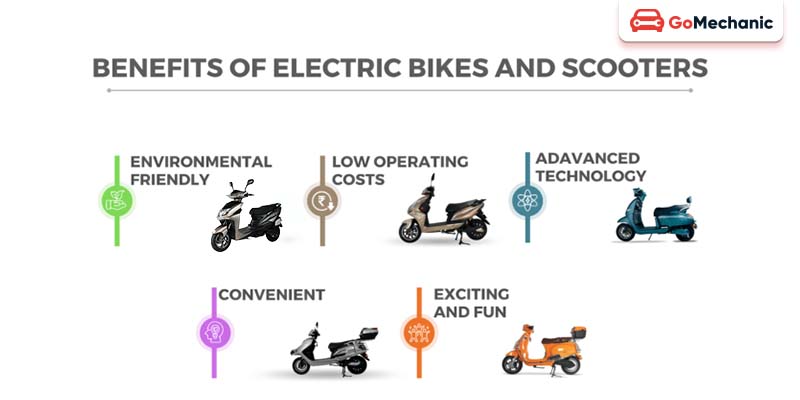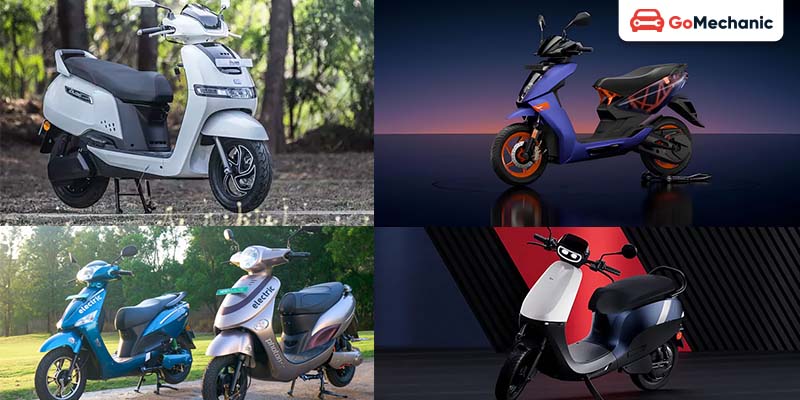Electric scooters are gaining popularity in India as a sustainable and cost-effective mode of transportation. With rising fuel prices and increasing environmental concerns, more people are turning to electric scooters as a cleaner alternative to traditional petrol-powered vehicles. The government’s push towards electric mobility and the availability of subsidies and incentives have further fueled this trend. Electric scooters offer a convenient and eco-friendly way to commute, especially in congested urban areas. Their quiet operation and low maintenance costs make them attractive to a wide range of consumers, contributing to a gradual shift towards greener transportation solutions in India.
Benefits of Electric Scooters

- Lower Operating Costs: Electric scooters are cheaper to operate than petrol scooters, as electricity is generally more affordable than petrol.
- Environmental Friendliness: Electric scooters produce zero tailpipe emissions, reducing air pollution and greenhouse gas emissions.
- Ease of Use: Electric scooters are easy to ride, with automatic transmissions and simple controls, making them ideal for urban commuting.
- Noise Reduction: Electric scooters are quieter than petrol scooters, reducing noise pollution in urban areas.
- Low Maintenance: Electric scooters have fewer moving parts than petrol scooters, reducing the need for regular maintenance and repair.
- Incentives and Subsidies: Many governments offer incentives and subsidies for electric vehicle purchases, making them more affordable for consumers.
- Long-term Savings: While the initial cost of an electric scooter may be higher than that of a petrol scooter, the lower operating and maintenance costs can result in significant long-term savings.
Government Initiatives and Incentives
- Incentives: The government offers various incentives to promote EV adoption, including subsidies on purchase price, tax benefits, and registration fee waivers.
- Subsidies: Subsidies are provided to EV manufacturers to reduce the cost of production, making EVs more affordable for consumers.
- Infrastructure Development: The government is investing in charging infrastructure to address range anxiety and encourage EV adoption. This includes setting up charging stations in cities and along highways.
- FAME II Scheme: The Faster Adoption and Manufacturing of Hybrid and Electric Vehicles (FAME) scheme provides financial incentives for the purchase of EVs and supports infrastructure development.
- State Policies: Several states have their own EV policies, offering additional incentives and subsidies to promote EV adoption.
- Awareness Campaigns: The government conducts awareness campaigns to educate the public about the benefits of EVs and encourage their adoption.
- Future Plans: The government aims to make India a global hub for EV manufacturing and has set ambitious targets for EV adoption in the coming years.
Technological Advancements
- Battery Technology:
Electric scooters are adopting advanced lithium-ion battery technology, offering improved energy density, longer life cycles, and faster charging times.
- Fast Charging:
Many electric scooters now support fast-charging capabilities, allowing users to charge their vehicles quickly and conveniently at home or public charging stations.
- Regenerative Braking:
Regenerative braking systems are becoming more common in electric scooters, helping to improve energy efficiency by converting kinetic energy into electrical energy during braking.
- Connectivity Features:
Electric scooters are integrating connectivity features such as GPS tracking, smartphone connectivity, and app-based controls, enhancing user convenience and security.
- Smart Displays:
Modern electric scooters come equipped with smart displays that provide real-time information about battery life, range, and performance metrics, allowing users to monitor their ride more efficiently.
- Improved Motor Efficiency:
Electric scooters are now equipped with more efficient motors, offering better performance and a longer range on a single charge.
- Enhanced Safety Features:
Electric scooters are incorporating advanced safety features such as anti-lock braking systems (ABS), traction control, and electronic stability control, enhancing rider safety.
Key Players in the Market

In 2024, the electric scooter market in India is witnessing significant growth, with several key players driving innovation and competition. Some of the major companies manufacturing electric scooters in India include:
Ather Energy:
- Ather Energy is a Bengaluru-based electric vehicle (EV) manufacturer known for its high-performance electric scooters.
- The company’s flagship models, the Ather 450X and Ather 450 Plus, offer advanced features such as touchscreens, fast charging, and smart connectivity.
Ola Electric:
- Ola Electric, a subsidiary of Ola Cabs, has entered the electric scooter market with the Ola S1 and S1 Pro models.
- These scooters boast impressive performance, long-range capabilities, and innovative features like voice commands and app-based controls.
Bajaj Auto:
- Bajaj Auto, a renowned two-wheeler manufacturer, has introduced electric scooters like the Bajaj Chetak Electric.
- This model combines retro styling with modern technology, offering a blend of nostalgia and innovation.
Hero Electric:
- Hero Electric is one of the pioneers in the Indian electric scooter market, offering a wide range of models catering to different consumer needs.
- The company focuses on affordability and reliability, making electric scooters accessible to a larger audience.
TVS Electric:
- TVS Electric, a division of TVS Motor Company, has ventured into the electric scooter segment with models like the TVS iQube Electric.
- This scooter features a sleek design, smart connectivity, and eco-friendly performance.
These companies are driving the growth of the electric scooter market in India through their innovative products, technological advancements, and commitment to sustainability.
Consumer Adoption and Trends
- Rising Fuel Costs: With the continuous increase in petrol prices, consumers are turning to electric scooters as a cost-effective alternative for daily commuting.
- Environmental Concerns: Growing awareness about environmental issues is prompting consumers to choose electric scooters for their eco-friendly nature, emitting zero tailpipe emissions.
- Government Incentives: Various government schemes and incentives, such as subsidies, tax benefits, and rebates, are encouraging consumers to switch to electric vehicles, including scooters.
- Advancements in Technology: Improved battery technology, longer ranges, faster charging times, and better performance are making electric scooters more attractive to consumers.
- Convenience and Ease of Use: Electric scooters are easy to operate, require less maintenance, and offer a smooth and quiet riding experience, appealing to urban commuters.
- Infrastructure Development: The expansion of charging infrastructure, especially in urban areas, is boosting consumer confidence in choosing electric scooters as a viable mode of transportation.
- Brand Reputation: Established brands offering reliable electric scooters with good performance and after-sales service are gaining consumer trust and driving adoption.
Future Outlook
- Market Growth: The electric scooter market in India is expected to continue growing rapidly, driven by increasing consumer awareness and government support.
- Innovations: Future electric scooters are likely to feature advancements such as longer battery life, faster charging, and improved performance, making them more attractive to consumers.
- Regulatory Support: Continued government incentives and regulations favouring electric vehicles are expected to further boost the adoption of electric scooters.
- Infrastructure Development: Expansion of charging infrastructure, especially in urban areas, will be crucial for the widespread adoption of electric scooters.
- Competition: Increased competition among manufacturers is likely to lead to a wider range of electric scooter models with varying features and price points, benefiting consumers.
Conclusion
The rise of electric scooters in India represents a significant shift towards sustainable and eco-friendly transportation solutions. With increasing government support, technological advancements, and changing consumer preferences, electric scooters are becoming a popular choice among commuters. The future outlook for electric scooters in India is promising, with continued market growth, innovations, and infrastructure development driving the adoption of electric vehicles. As more people embrace electric scooters as a practical and environmentally conscious mode of transportation, the landscape of urban mobility in India is set to undergo a transformative change.





